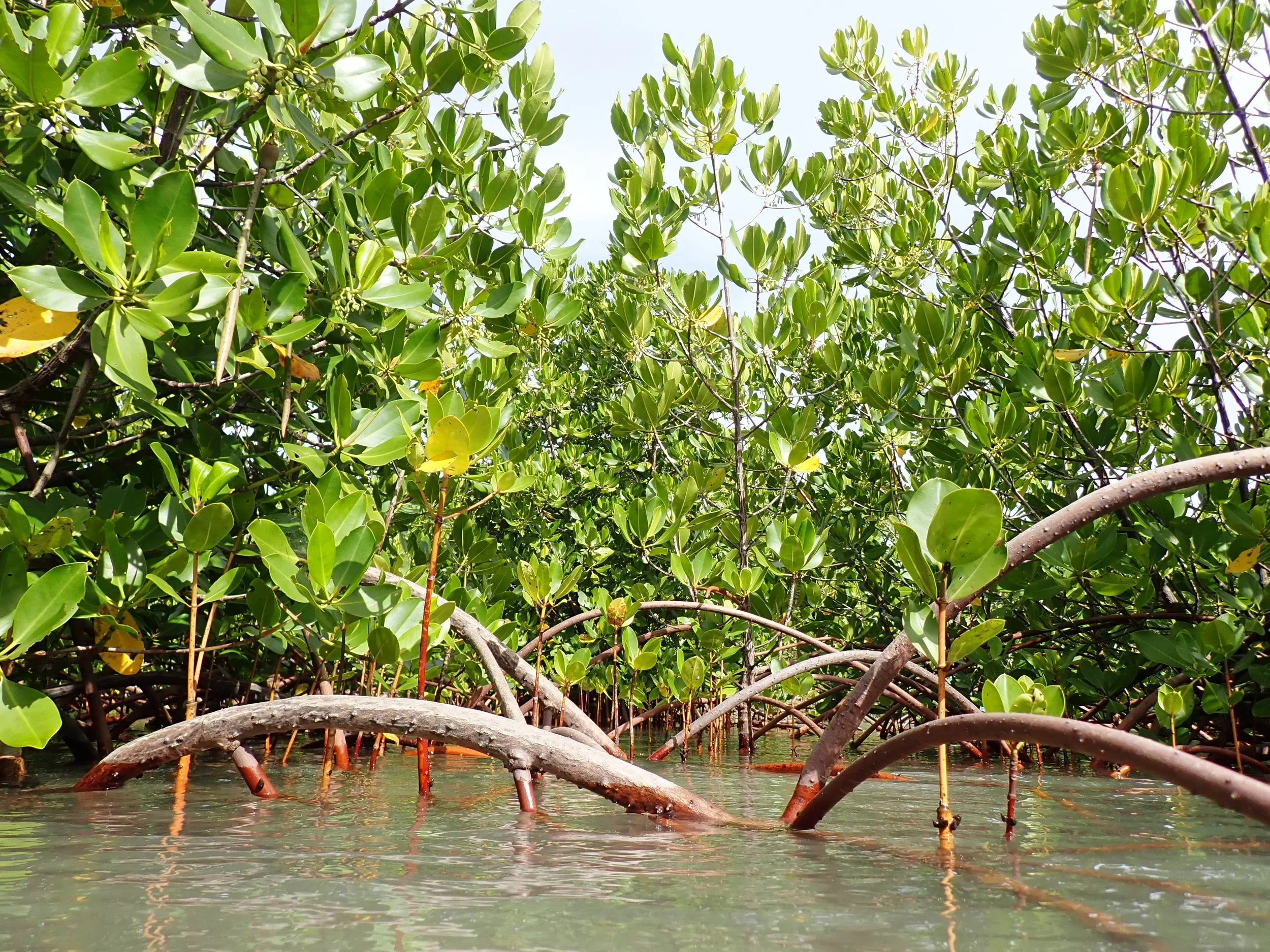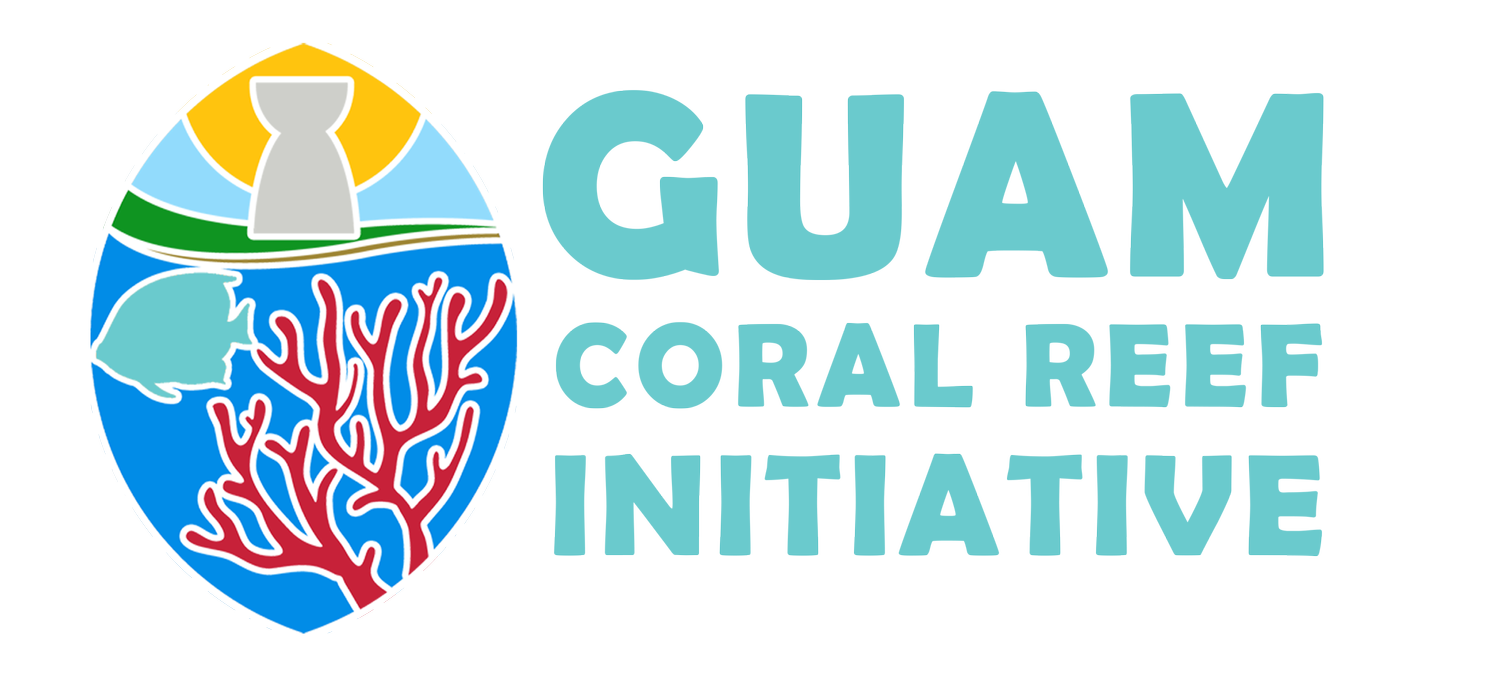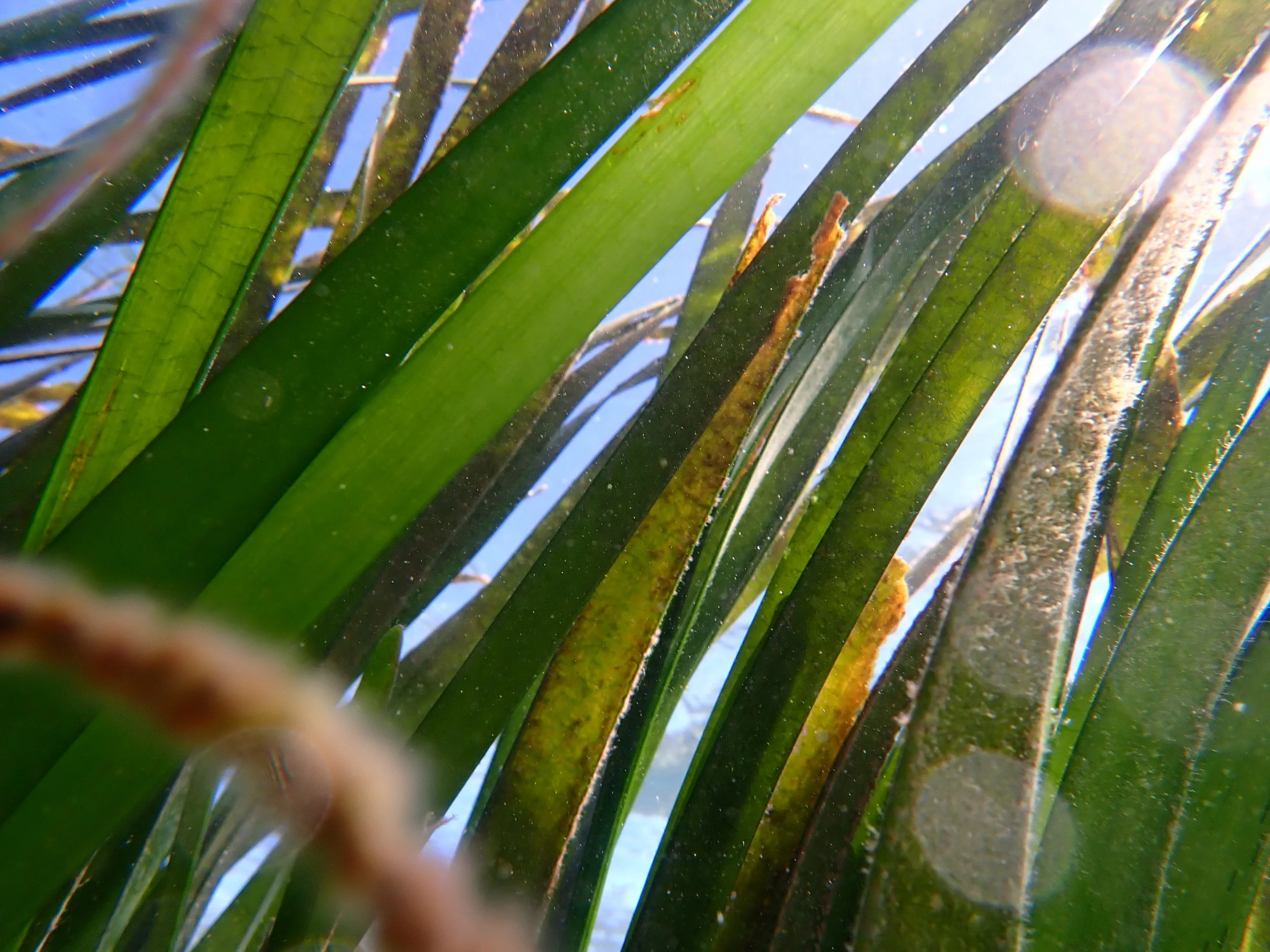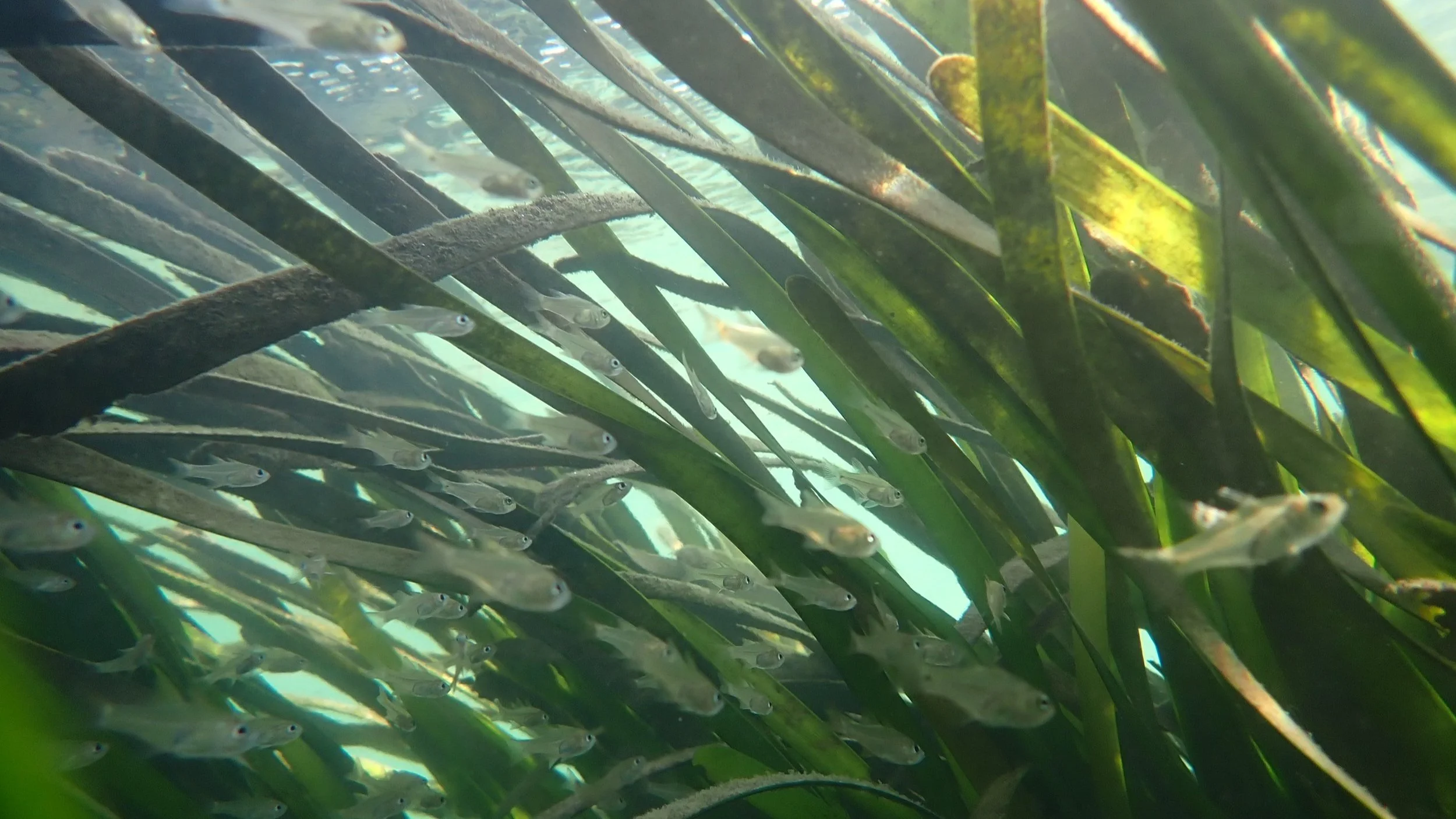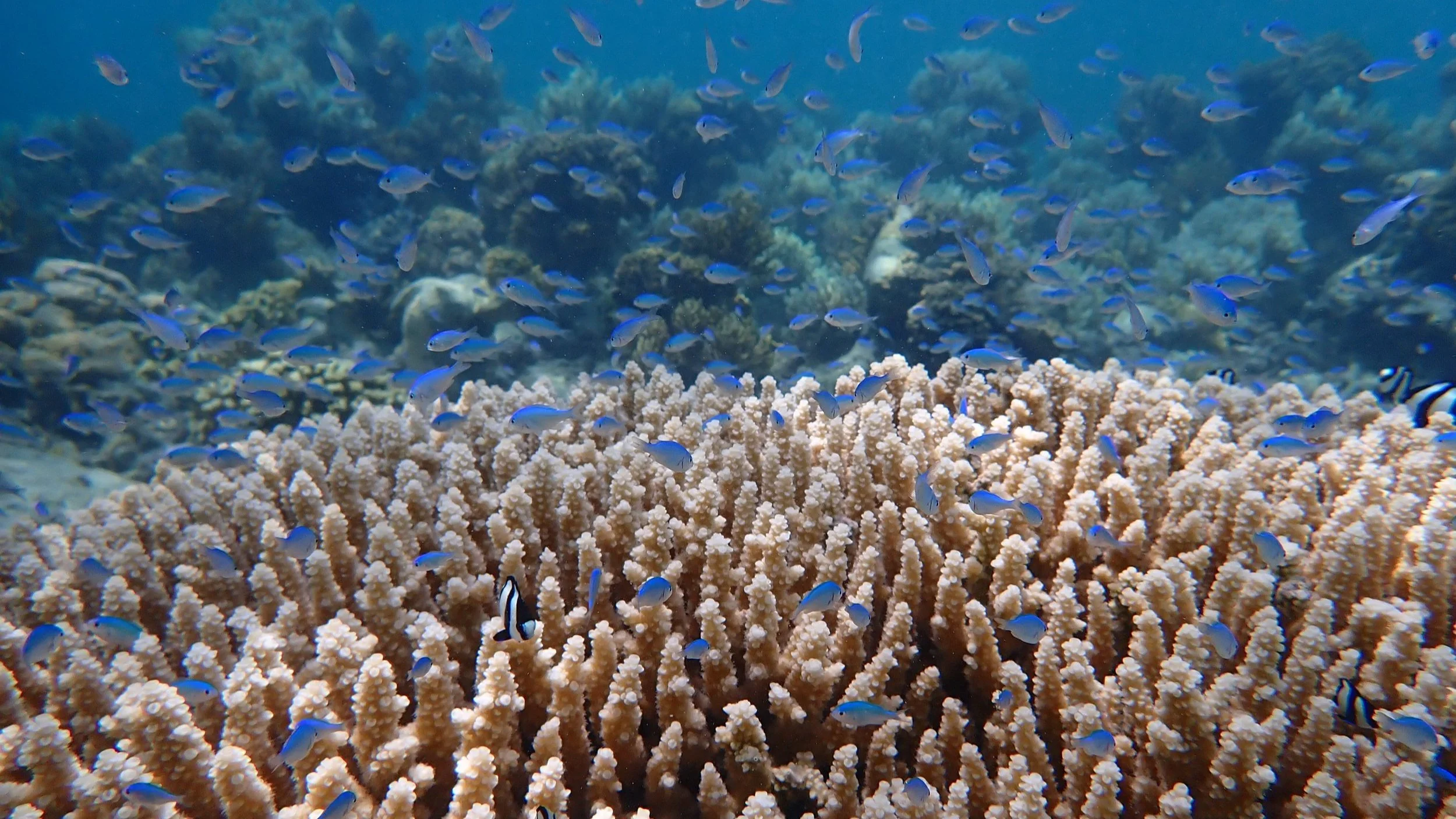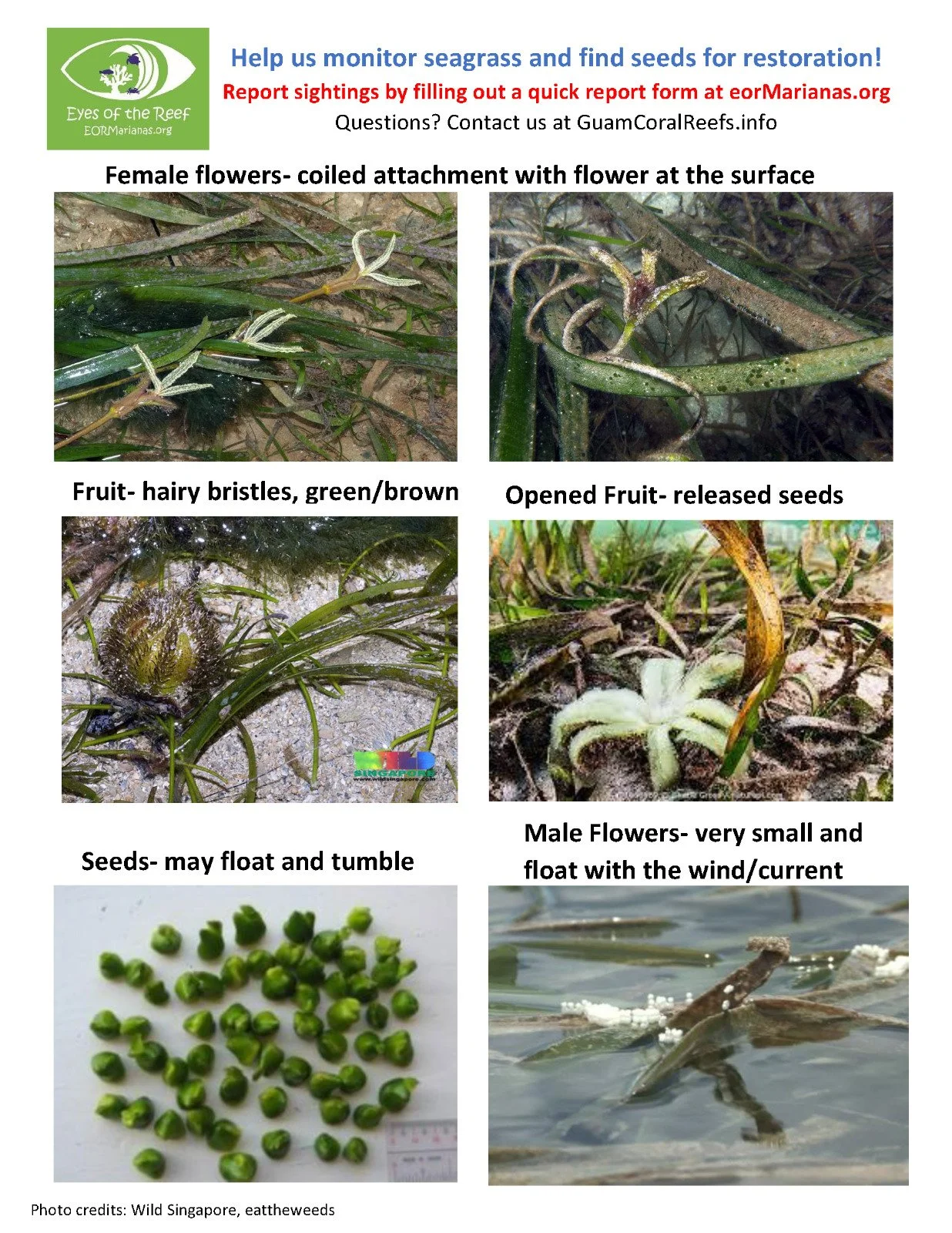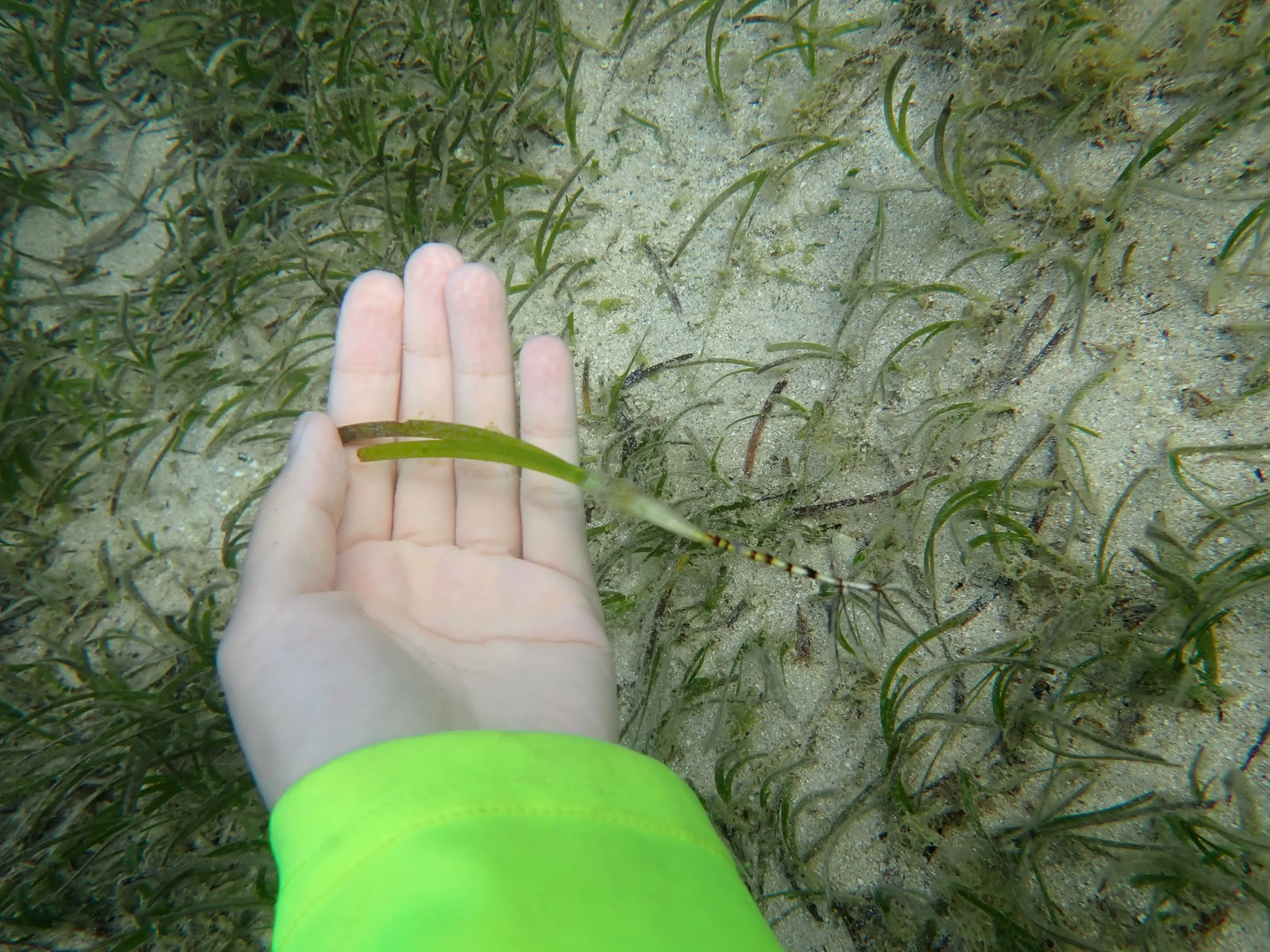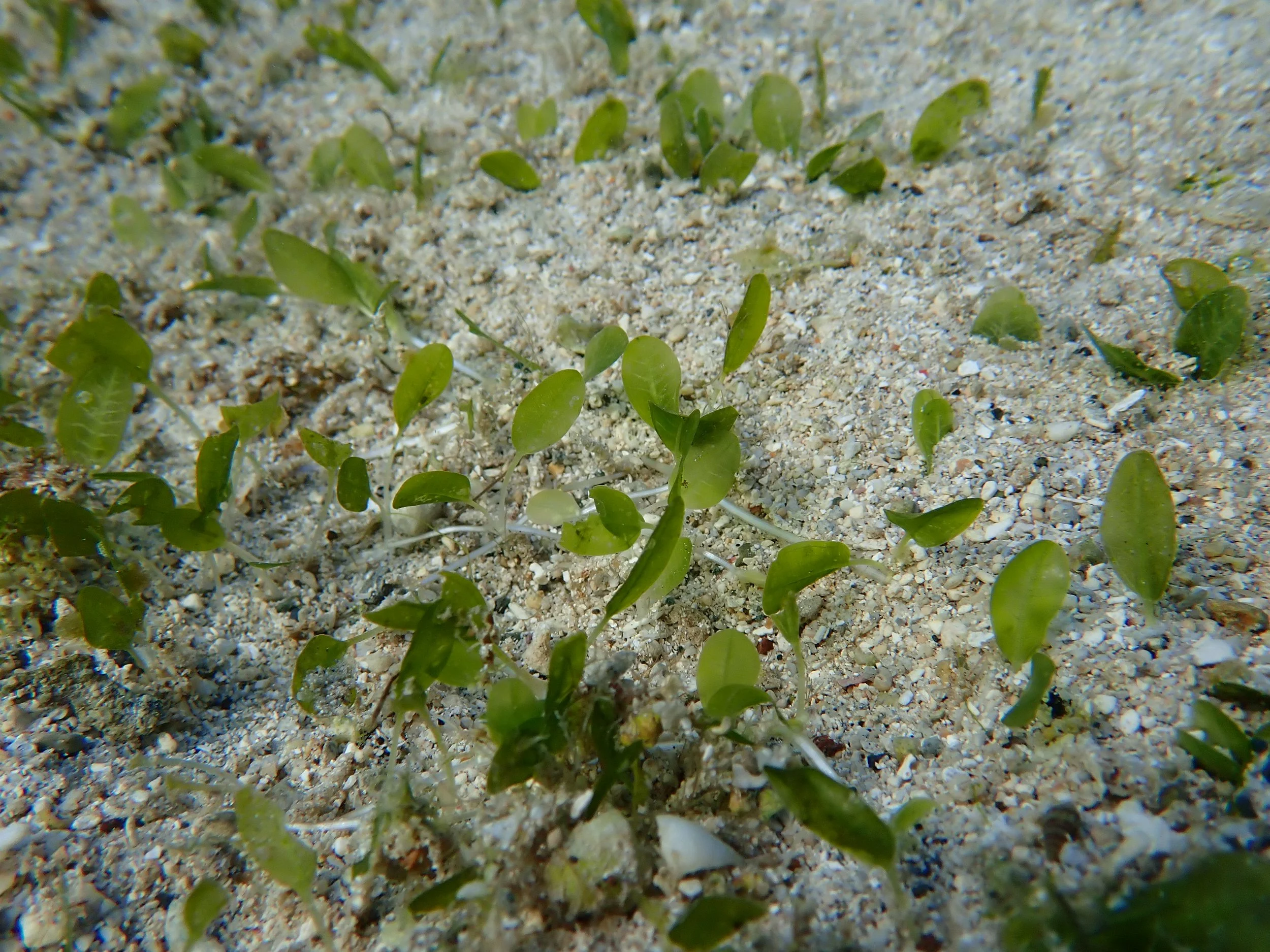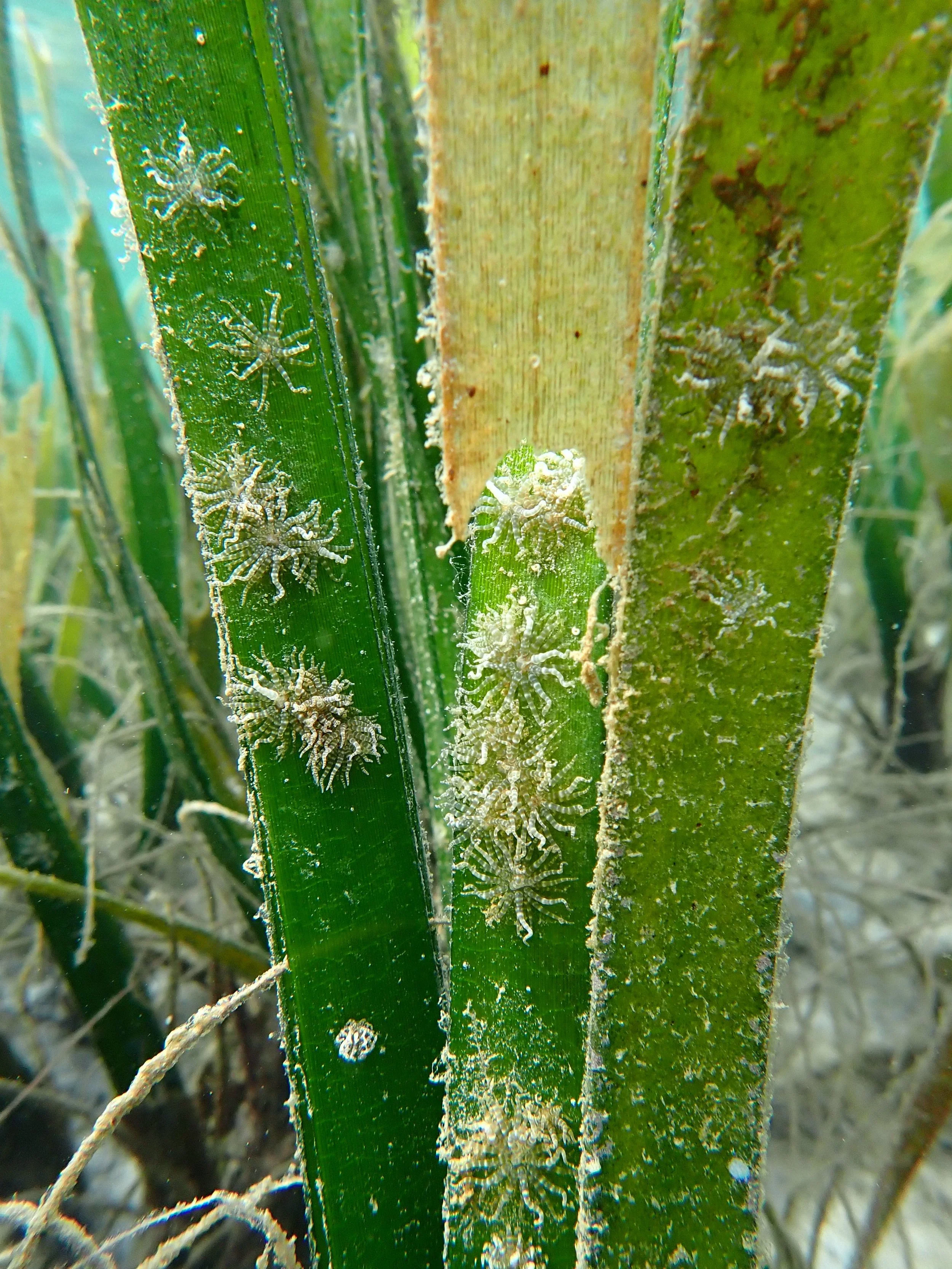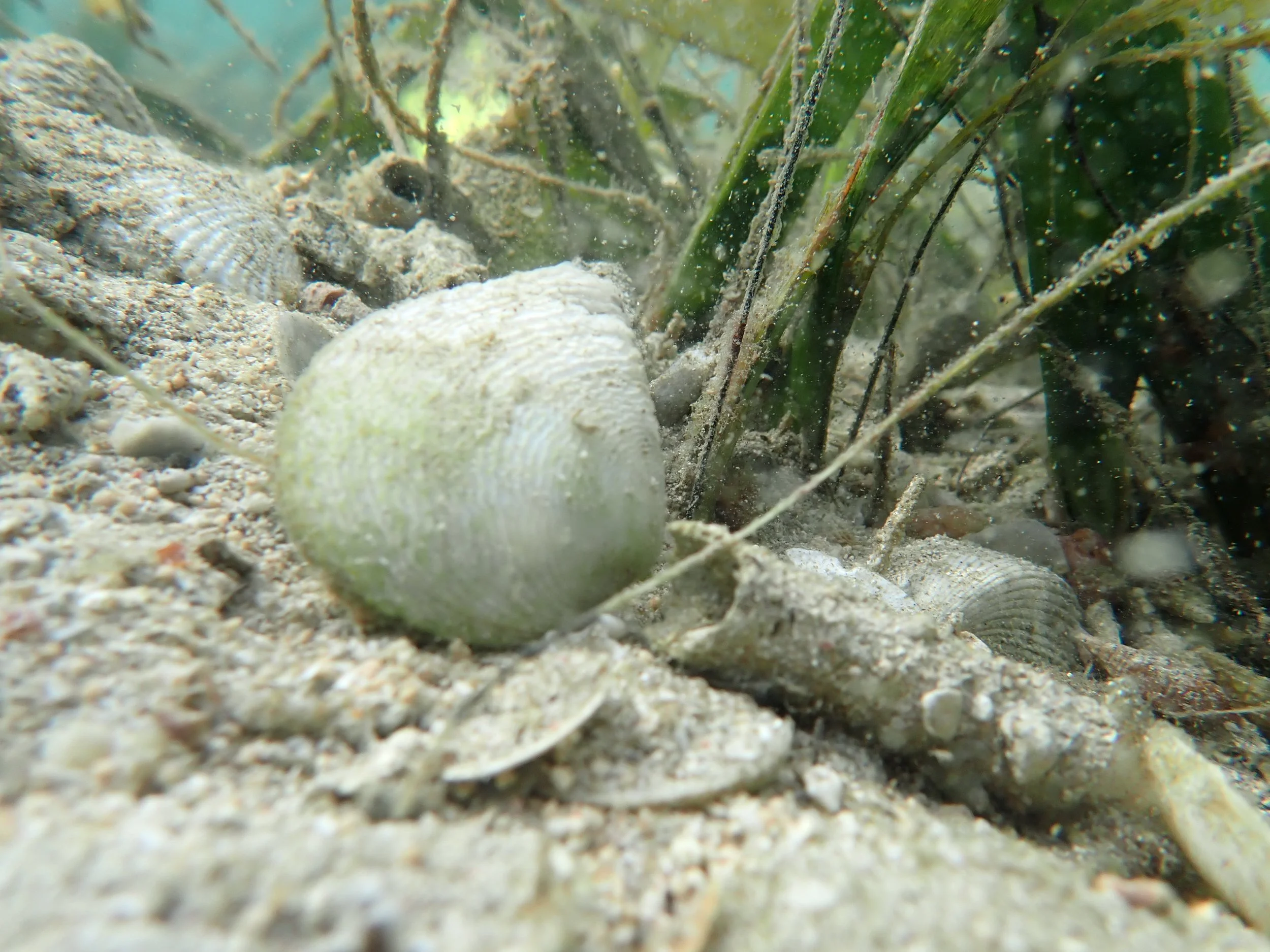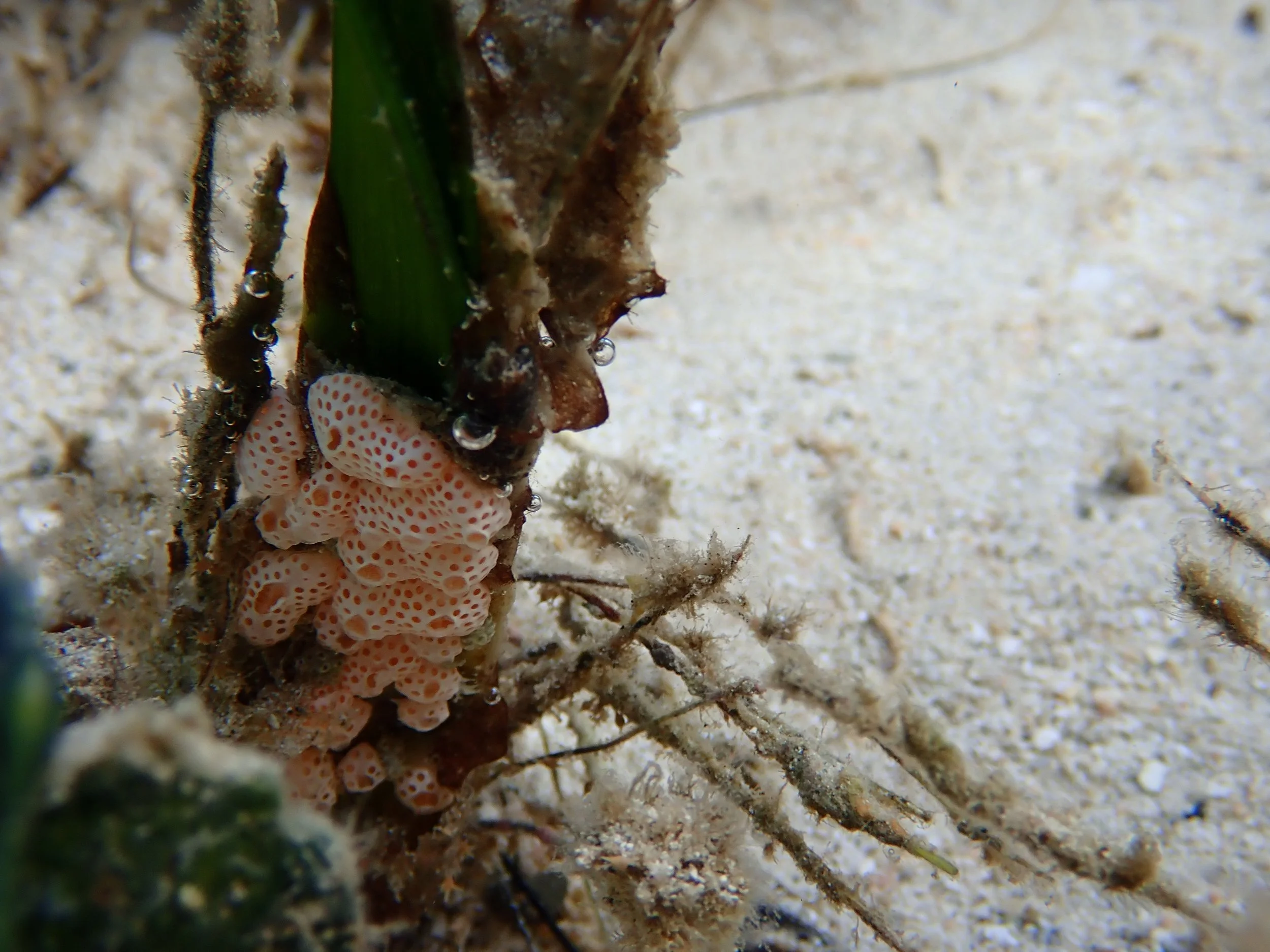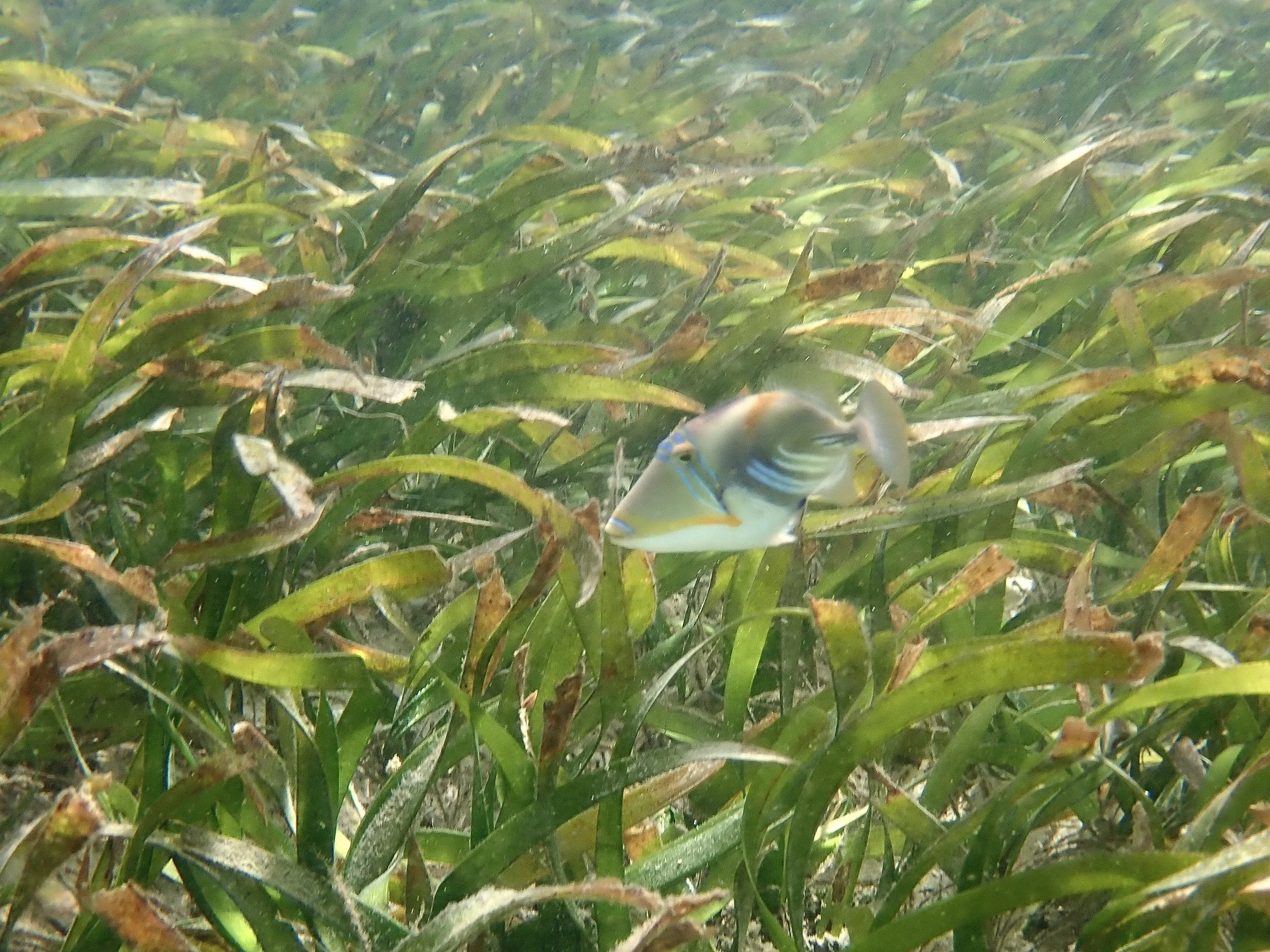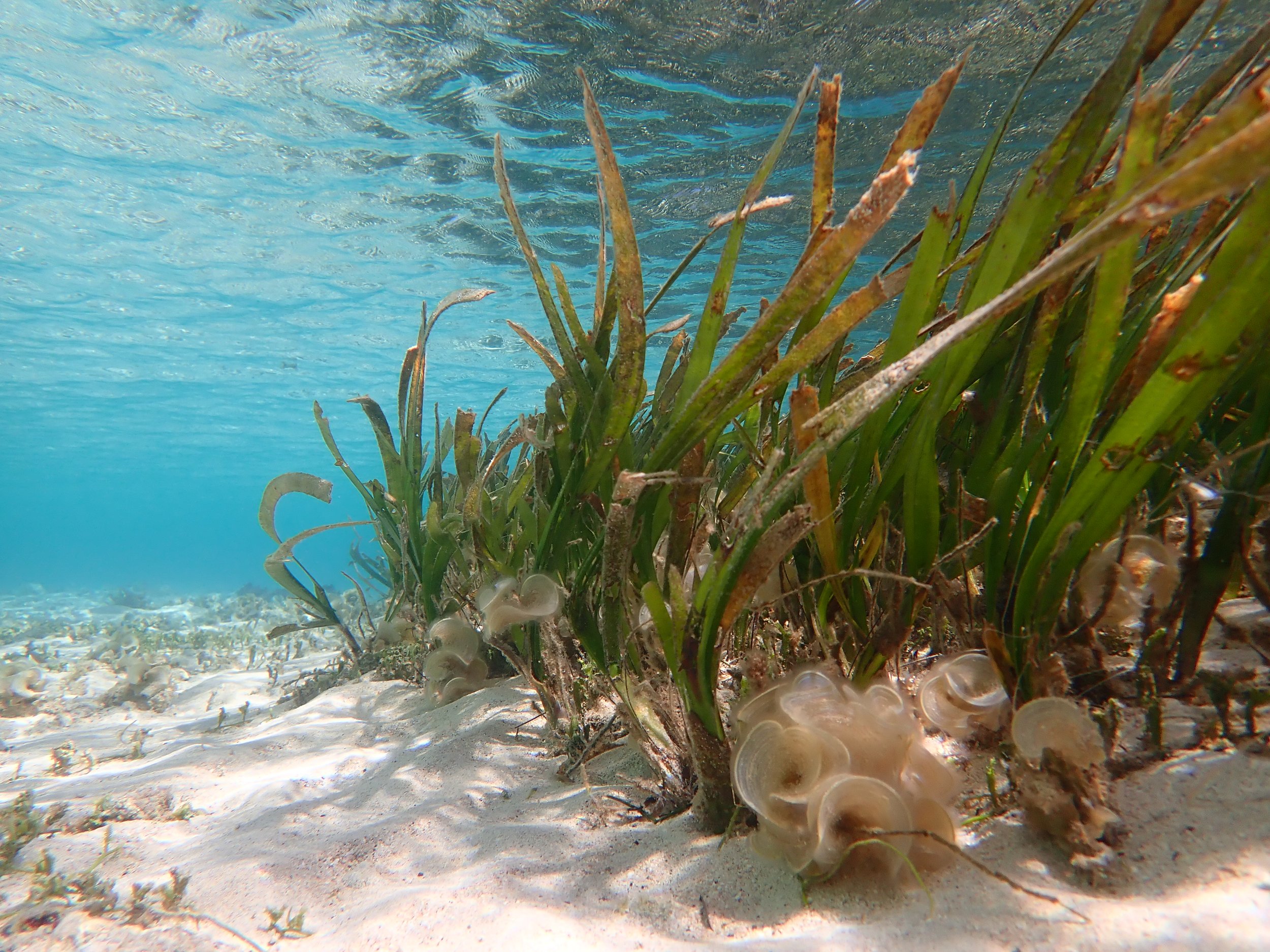
Guam’s Seagrass Meadows
Seagrass Basics
-
It is a type of plant that lives underwater!
More specifically, Seagrasses are marine flowering plants that are different from algae or seaweed. They have roots, flowers, and vascular structures (tubes) that help move nutrients and water around. There are many different varieties of seagrass of all different shapes and sizes!
-
Seagrass and seaweed may look similar, but they are actually completely unrelated!
If you see something with an odd irregular shape, brown or red colored, it is most likely seaweed, not seagrass.
Here are some of their differences:
Seagrasses are plants, while seaweeds are protists (a protist is not an animal, a plant, or fungi; it is its own special category of living thing!)
Seagrasses tend to be green and have long, narrow blades, while seaweeds can be many different colors (green, brown, red, purple, etc.) and many different shapes (they can resemble ferns, lettuce, bubbles, ruffles, etc.)
Seagrasses can produce flowers, while seaweeds cannot
Seagrasses have roots but seaweeds have a holdfast instead (a holdfast is a root-like structure that helps anchor the seaweed to a rock but doesn’t suck up any nutrients like roots do)
-
Yes, it is!
Seagrasses evolved from land plants and still have some characteristics in common. Seagrass generally looks similar to grass you find on land, and has narrow leaves (also called blades), or round leaves.
While seagrasses are indeed related to land grass, they are more closely related to giant taro (Alocasia macrorrhizos), fivefingers (Syngonium angustatum), and other land plants that are members of the order Alismatales.
Seagrasses fall into four main families: Zoseraceae, Hydrocharitaceae, Posidoniaceae, and Cymodoceaceae.
-
Mostly around the southern part of the island.
Seagrasses are mainly found south of Tamuning and Pago Bay. The largest seagrass beds (large continuous patches) are in Hagåtña, Hågat, Malesso’, and Inalåhan.
Check out this map for more details on where to find these cool habitats!
Why are seagrasses important to our community?
Fish and Seafood
Seagrass blades provide lots of places for fish to hide and provide food sources to marine life
Young fish use the seagrass as a nursery, including young mafute’ (emperorfish) and mañahak (juvenile rabbitfish)
Healthy Water and Clean Coral
Seagrasses absorb many types of pollution that washes into the ocean from land as run-off
Seagrasses store a lot of carbon in the sediment below them, which helps fight climate change, a major threat to coral
Erosion Prevention
Seagrass blades help absorb the energy from incoming waves, protecting the coast from erosion
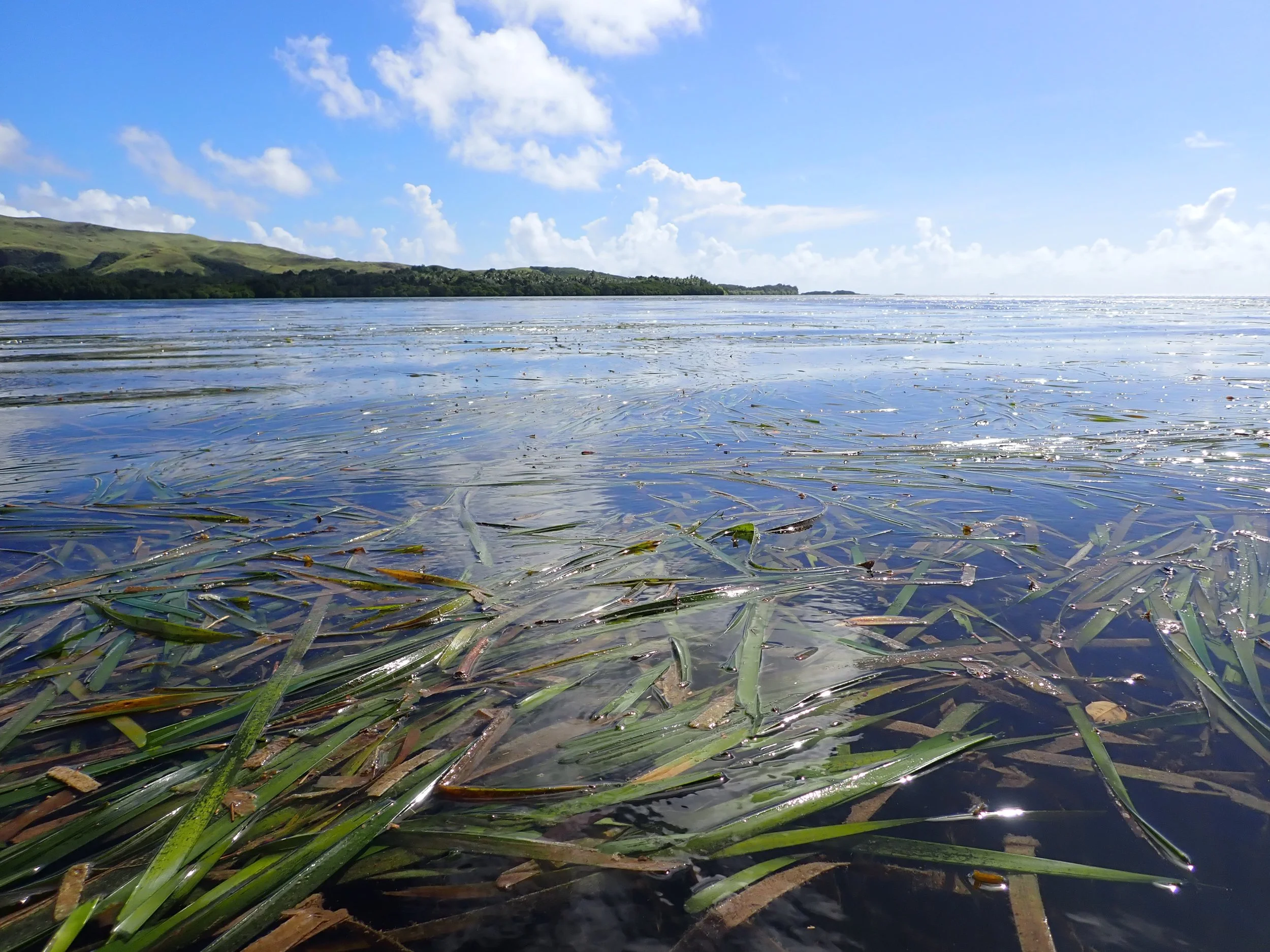
What can I do to protect seagrasses?
Unfortunately, Guam's seagrasses were estimated to have declined by approximately 22% between 2005 and 2015. (LaRoche et al. 2018) Here are some simple ways you can help support our seagrasses so they can continue to provide habitat for wildlife and benefits to our coral reefs and community:
-
Repeated trampling of seagrasses can damage them, which can happen in popular recreational areas such as Piti Bomb Holes. Walk around or swim through the seagrasses rather than walking through them. Cutting seagrass damages the environment and tape grass does not grow quickly and can take a decade or more to reestablish once removed.
-
Although seagrasses help protect coral reefs by absorbing pollution, they also have a limit to what they can absorb. You can help by reducing your disposing of waste properly, including items like old electronics and household chemicals. Keeping vegetation and trees on your property will also help absorb water and prevent sediment from running off into the ocean.
-
Healthy populations of fish, sea cucumbers, and other marine life help keep the seagrasses healthy. Follow marine preserve fishing guidelines and obtain the necessary permits to help prevent overharvesting.
-
Seagrass flowers in Guam are quite mysterious and scientists aren't sure when, where, and how often they produce flowers. Please help us keep an eye out and let us know if you notice any seagrass flowers in the water. Seagrass is a flowering plant but its flowers don’t look like what you might expect, so refer to the guide on the left to help you know what to look for and who to report sightings to!
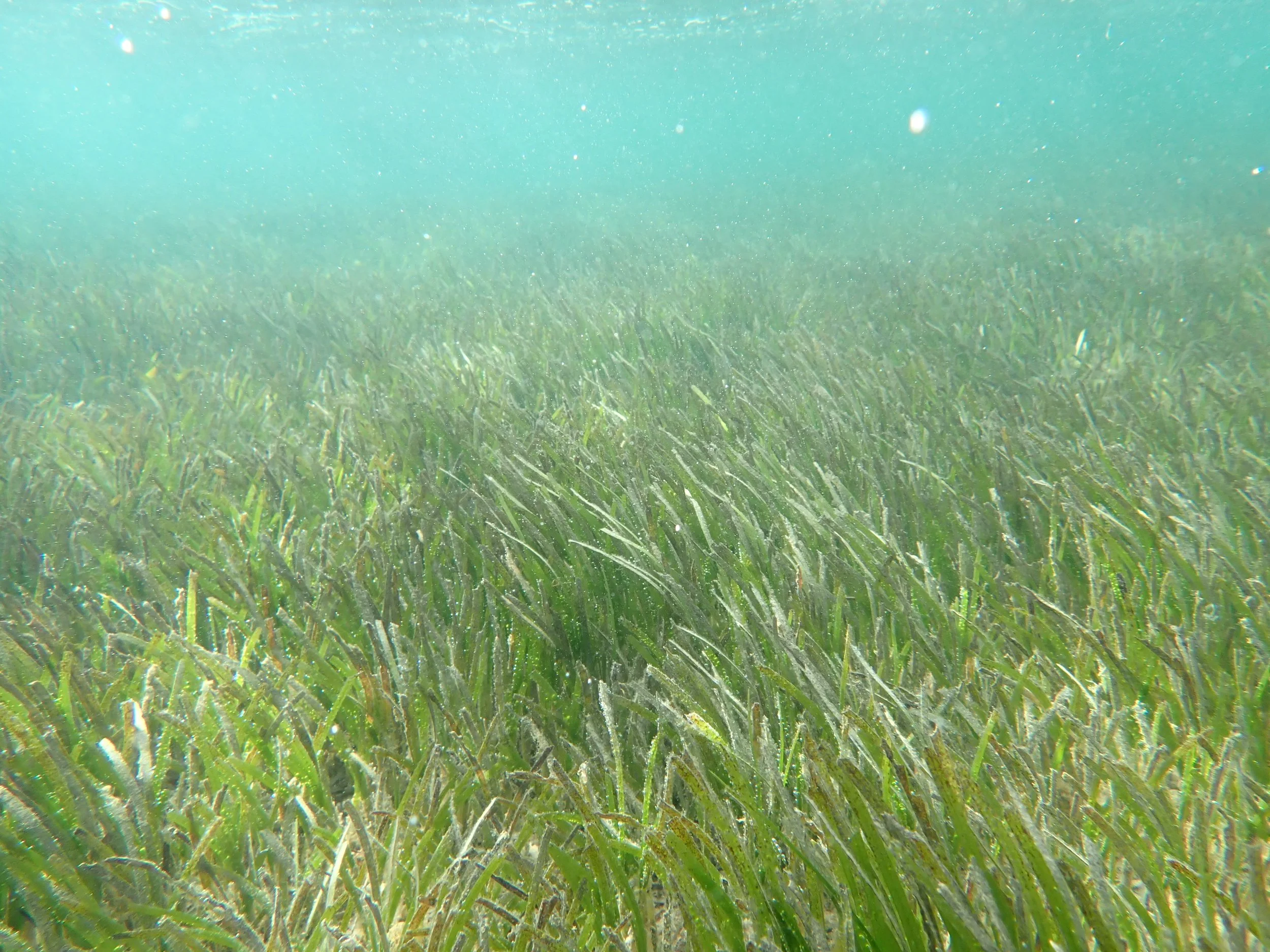
What kinds of seagrasses do we have in Guam?
-
Needle Grass
This smaller seagrass, often about 10cm long, can be found mixed in with larger seagrasses or by itself. It helps stabilize sediments and can grow faster than tape grass.
Scientific name: Halodule uninervis
-
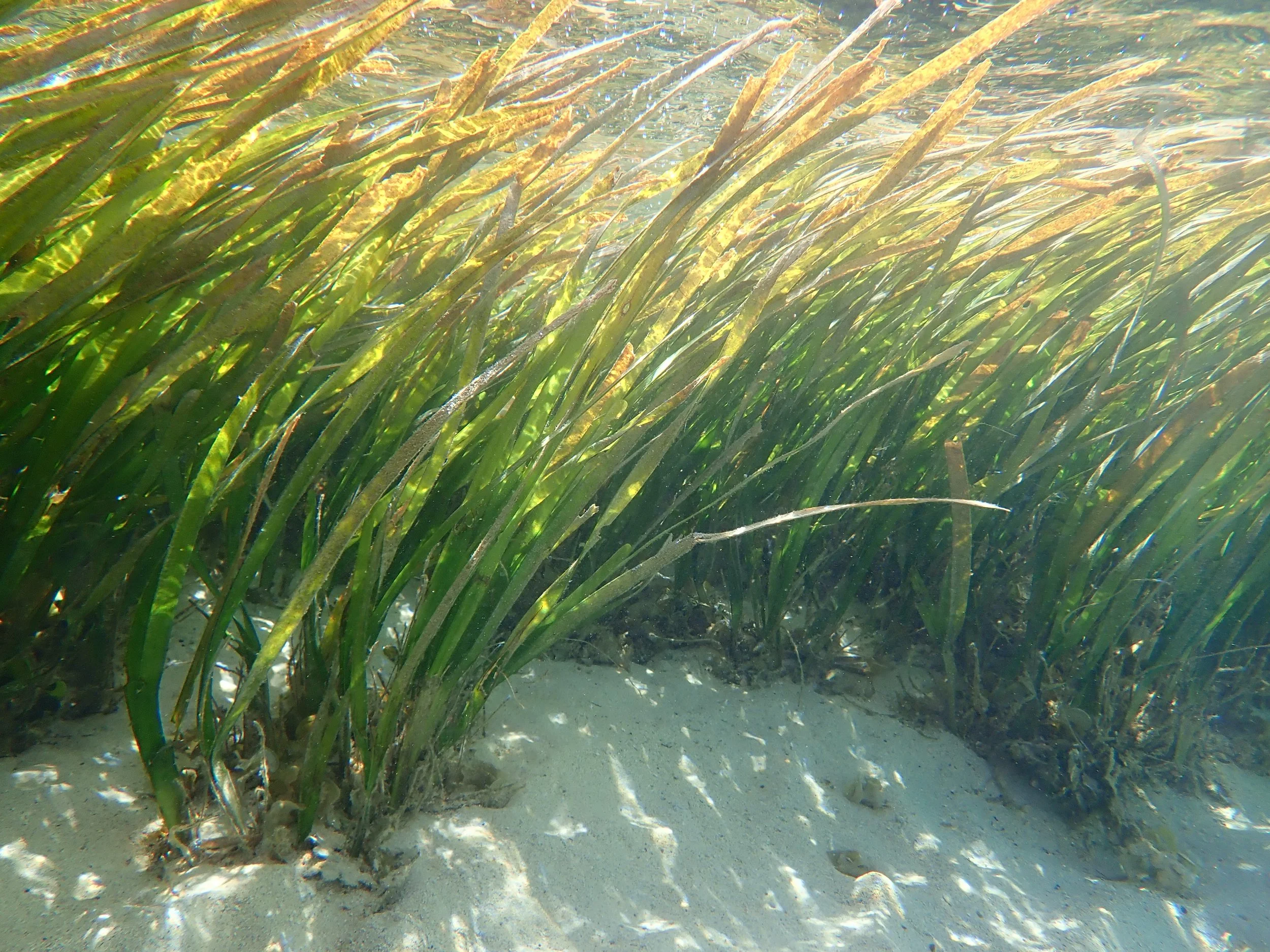
Tape Grass (Lo'u)
This is the largest and most common type of seagrass in Guam. It forms large underwater meadows that can grow over a meter in length, which provides lots of habitat for fish.
Scientific name: Enhalus acoroides
-
Spoon Grass
This is Guam’s only species of round seagrass and is small growing only a few centimeters tall. It also helps to stabilize sediments and can recover quickly after a disturbance like a storm.
Scientific name: Halophila gaudichaudii
Which animals live in seagrass meadows?
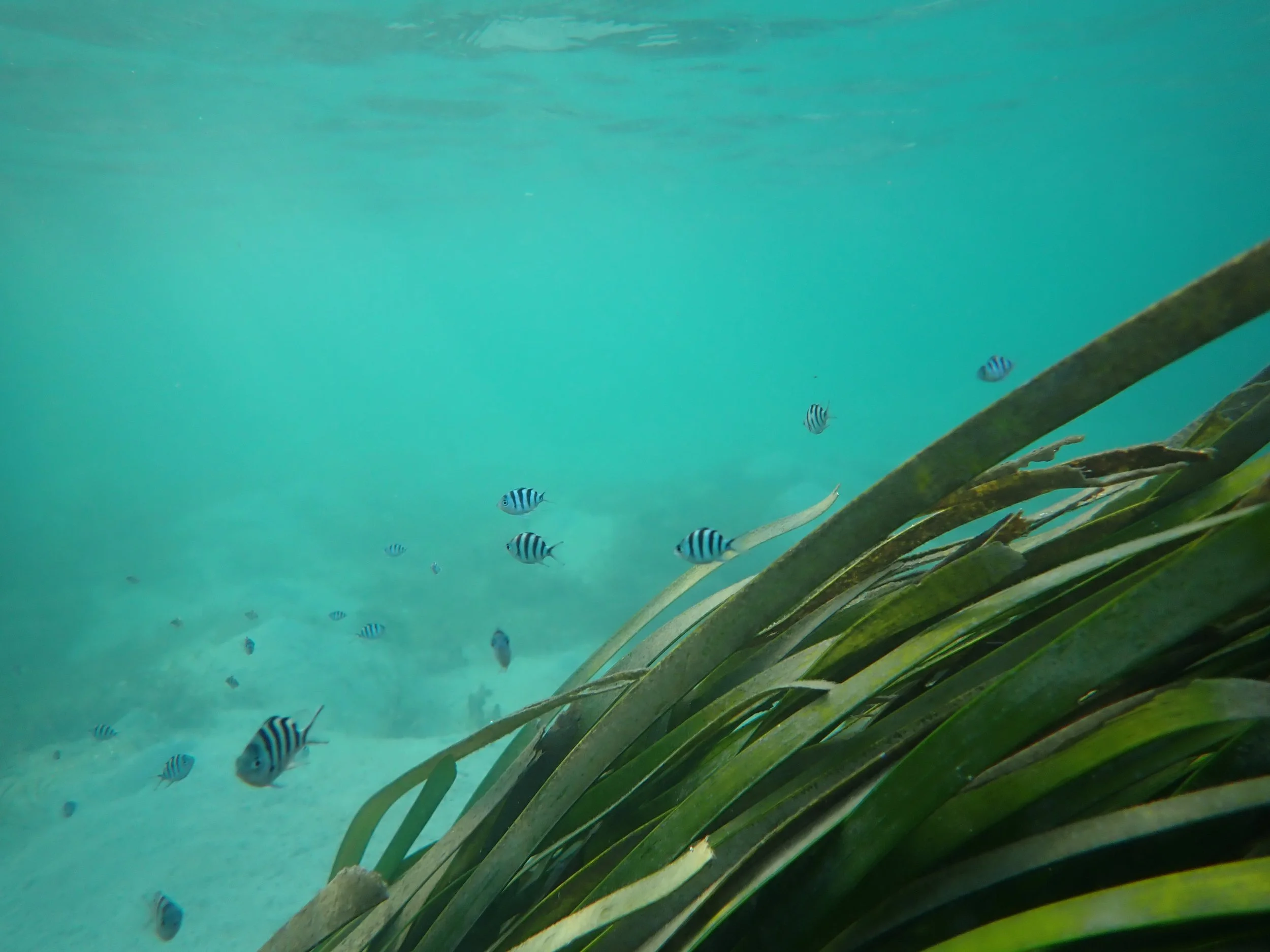
Where can I snorkel in seagrass meadows on Guam?
1. Piti Bomb Holes Marine Preserve:
This location is one the easiest places to access to check out some seagrasses: snorkelers and divers often walk right by the seagrasses on the way to the coral reef.
If you choose to explore these seagrasses remember to snorkel instead of walking through the seagrass and trampling it!
***Note: the seagrass at Piti Bomb Holes has been declining and is currently very short and sparse. However, throughout Guam’s past, this has been a great area to check out seagrass.
2. Hagåtña:
A large seagrass meadow exists right along the shore in East Hagåtña.
Public parking allows easy access, and this area also has pavilions for shade. The seagrass meadows are the dark, rounded shapes running along the coast, as shown in the map below.
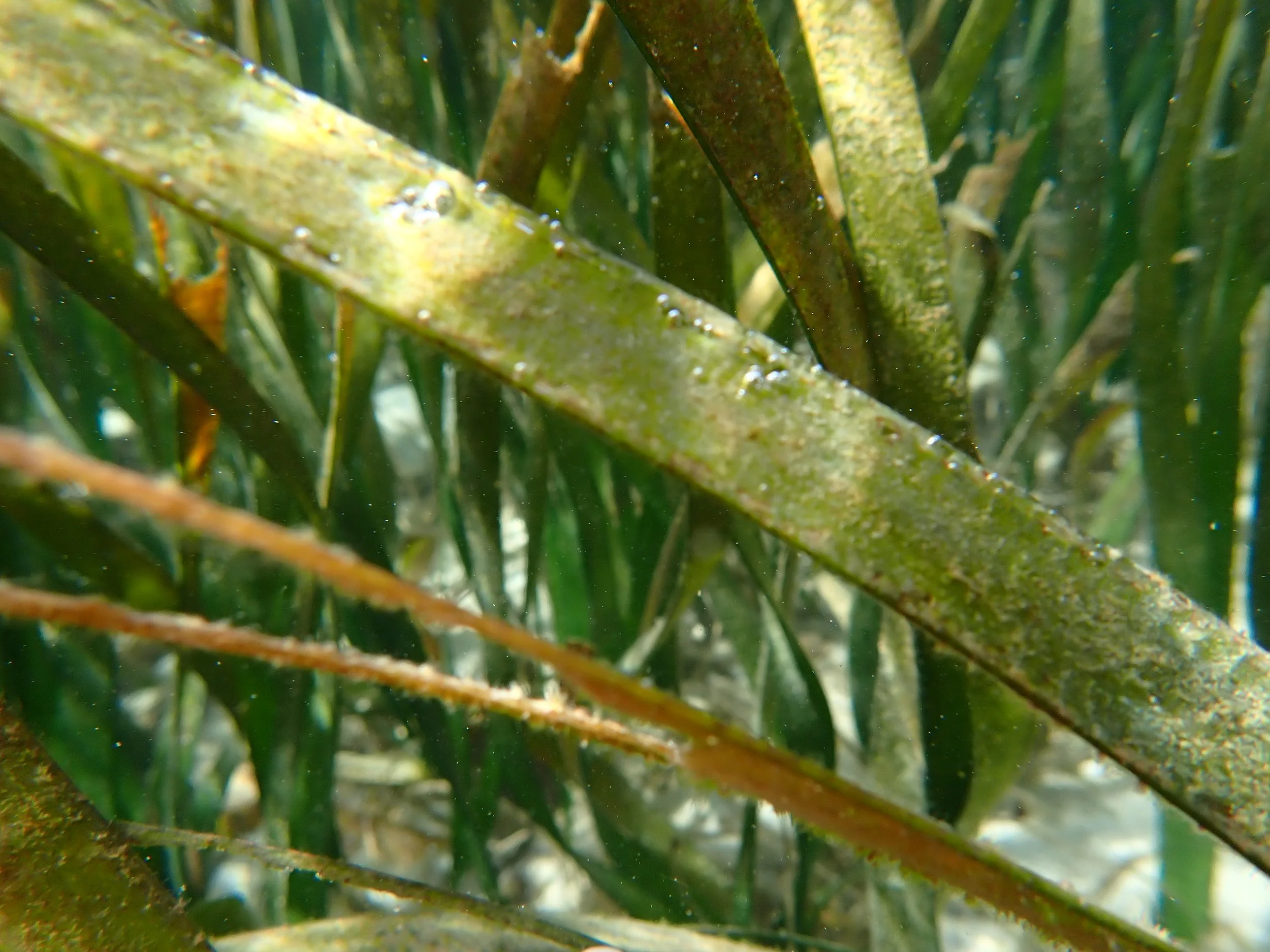
Tips for snorkeling in seagrass meadows
Despite seagrasses being important homes for many animals, they are often overlooked. Seagrasses can be uncomfortable to walk through and can get damaged by repeated trampling. Here are some helpful tips for snorkeling in seagrass:
The best way to experience and protect seagrasses is by snorkeling over them, not walking through them
Remember!
-
Seagrasses generally live in very shallow water, so going during high tide allows you to better swim over the seagrass.
-
There are many amazing animals hiding in our seagrasses, however, some of them are small, well-camouflaged, and shy! By going slowly and looking closely, you will be better able to spot some of these awesome creatures. Sea creatures can be found on all parts of the seagrass, so be sure to look all around you: on the sediment in between the seagrasses, on the seagrass blades themselves, and hovering just above the seagrass beds.
-
Some seagrasses might have small organisms that can cause mild skin irritation, and some people find the feeling of seagrass touching their skin to be uncomfortable. If you have sensitive skin or are sensitive to touch, consider wearing a full-length rashguard and leggings for full protection. Alternatively, you can snorkel along the edge of the seagrass instead of directly over it.
Want to learn more?
Click here to check out our seagrass resources!
